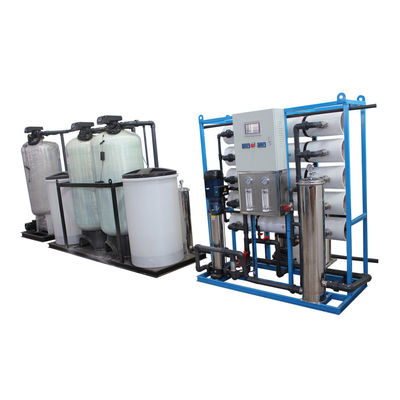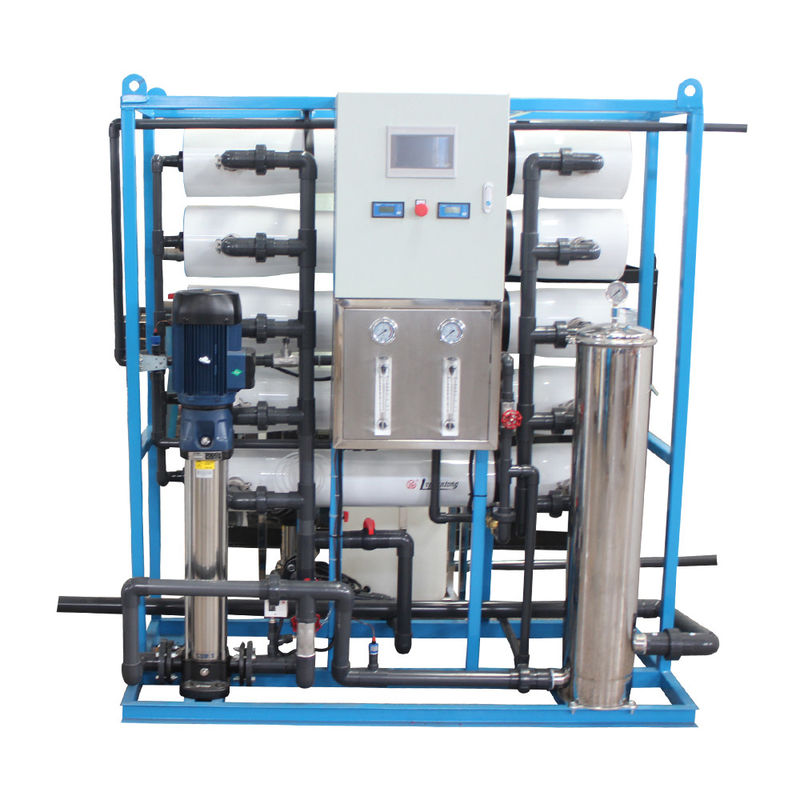4000LPH Reverse Osmosis Water Treatment System , Reverse Osmosis Water Purification Machine
Product Details:
| Place of Origin: | China |
| Brand Name: | Fenigal/OEM |
| Certification: | CE/NSF etc. |
| Model Number: | RO-YLD-4TPH |
Payment & Shipping Terms:
| Minimum Order Quantity: | 1 Set |
|---|---|
| Price: | Negotiable |
| Packaging Details: | Standard Export Wood Crate/Carton or Naked wrapped by film |
| Delivery Time: | 15~30 days |
| Payment Terms: | T/T, Western Union, Paypal etc. |
| Supply Ability: | 50 set per month |
|
Detail Information |
|||
| Technology: | Reverse Osmosis | Design: | Skid Mount |
|---|---|---|---|
| Recovery Rate: | 65~75% | Feed TDS/ppm: | <2,000 |
| Water Temp.: | 5~35˚C | Material: | SS304/SS316L,carbon Steel |
| Voltage: | 380V,415V,220V,can Be Customized | Desalination Rate: | 99%,99.7% |
| Control: | Electronic,Manual/PLC | Ro Membrane: | Vontron, Hydranautics Or DOW,4040 |
| Highlight: | 4000LPH Reverse Osmosis Water Treatment System,415V Reverse Osmosis Water Treatment System,SS304 reverse osmosis water purification machine |
||
Product Description
Reverse Osmosis(RO)Water Purifying System Automatic PLC control 4000 Liter/hour
How Reverse Osmosis works?
A reverse osmosis system removes sediment and chlorine from water with a prefilter before it forces water through a semipermeable membrane to remove dissolved solids. After water exits the RO membrane, it passes through a postfilter to polish the drinking water before it enters a dedicated faucet. Reverse osmosis systems have various stages depending on their number of prefilters and postfilters.
Stages of RO systems
The RO membrane is the focal point of a reverse osmosis system, but an RO system also includes other types of filtration. RO systems are made up of 3, 4, or 5 stages of filtration.
Every reverse osmosis water system contains a sediment filter and a carbon filter in addition to the RO membrane.The filters are called either prefilters or postfilters depending on whether water passes through them before or after it passes through the membrane.
Each type of system contains one or more of the following filters:
Sediment filter: Reduces particles like dirt, dust, and rust
Carbon filter: Reduces volatile organic compounds (VOCs), chlorine, and other contaminants that give water a bad taste or odor Semi-permeable membrane: Removes up to 98% of total dissolved solids (TDS)
![]()
Removal ratio of reverse osmosis on ions
|
![]()
Reverse Osmosis (RO) Systems Remove up to 99% of Total Dissolved Solids
Reverse osmosis is a membrane separation process in which feed water flows along the membrane surface under pressure. Purified water permeates the membrane and is collected, while the concentrated water, containing dissolved and undissolved material that does not flow through the membrane, is discharged to the drain. Reverse osmosis systems remove salts, microorganisms and many high molecular weight organics. System capacity depends on the water temperature, total dissolved solids in feed water, operating pressure and the overall recovery of the system.
Advantages of Reverse Osmosis over Conventional Processes
Compared with other conventional water treatment processes, reverse osmosis has proven to be the most efficient means of removing salts, chemical contaminants and heavy metals, such as lead, from drinking water. For waters with total dissolved solids of 200 or more, reverse osmosis is less expensive than ion exchange. Even at total dissolved solids of less than 200, it is preferred over ion exchange for removal of silica and organics. Compared with distillation, reverse osmosis use only a fraction of the total energy and does not have high temperature problems or scaling and corrosion. Today reverse osmosis systems have proven to be the most economical and efficient means of improving the quality of water.
Simple To Operate And Maintain
Applied Membranes reverse osmosis systems come assembled, factory tested and in ready-to-operate condition. They are designed for efficiency and are simple to operate and maintain. Besides regular monitoring and periodic membrane cleaning, membranes need to be changed every one to three years depending on water quality, size of the system and pretreatment. Pumps also require routine maintenance.
![]()







